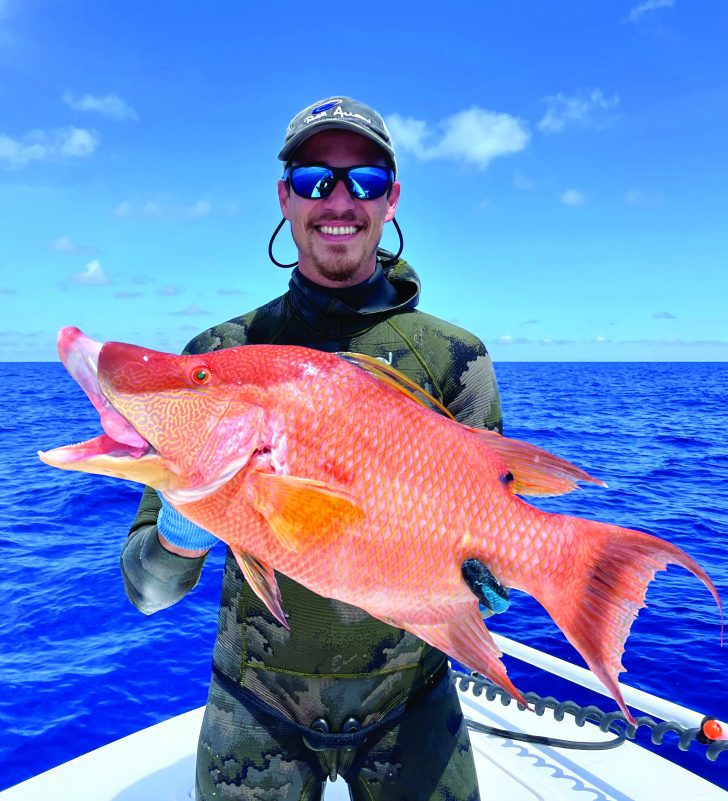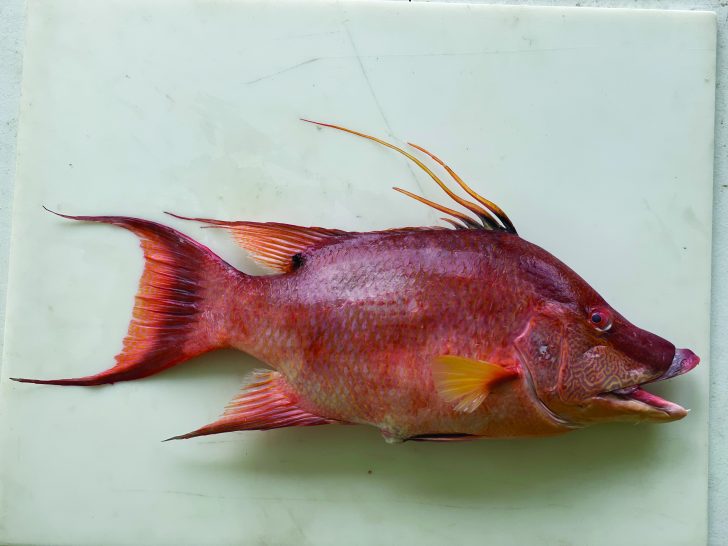By Michael Sipos, Florida Sea Grant agent; UF/IFAS Extension Collier County

Hogfish can be spotted in the Atlantic from North Carolina to Brazil, where they live in depths of up to 200 feet. These fish, however, are more commonly found in depths of 100 feet or less, where they can use photosynthetic organisms like sea fans for cover. During the day, hogfish can be found on the reef or the surrounding sand where they forage in the sediment for clams, crabs and shrimp and sea urchins. This species has a set of crushing plates located in their throat that help break down the shells of their prey.
Hogfish are all born female and later transition to males later in life due to social cues in their local population. These fish spawn in groups where one male can have a harem of multiple females. When the male is removed from the population, the largest female begins her transition to male and develops a more dramatic sloping snout as well as darker pigmentation around the face, almost resembling a mask.

Conversely, in populations with heavy harvesting pressure, hogfish have been known to transition at a much smaller size. Hogs spawn during winter-spring where the males perform interesting behaviors of quivering and raising fins before rushing a few feet off the bottom with the female expelling her eggs and sperm. A single male can spawn multiple times in a day while a female hogfish can spawn multiple times per season. Hogfish eggs hatch within 24 hours and are in the larval form for about a month until they settle out of the water column as recognizable juveniles.

For more fishy content and updates on upcoming educational programs check out the UF/IFAS Extension Collier County Florida Sea Grant Facebook Page, YouTube Channel, or Michael Sipos’s UF/IFAS Blog. Contact Michael Sipos at sipos624@ufl.edu.
